Recently, the Department of Liver Surgery of PUMCH, the Institute of Biomedical Engineering of Chinese Academy of Medical Sciences, and the Department of General Surgery of the First Affiliated Hospital, Nanjing Medical University published their progress in predicting chemotherapy outcomes using 3D models as a research article in “Advanced Science” (IF: 15.1). The team established 3D-bioprinted (3DP) models of colorectal cancer (CRC) and colorectal cancer liver metastasis (CRLM) using patient-derived primary tumor cells. It was found that 3DP tumor models exhibited a high degree of heterogeneity in sensitivity to different chemotherapeutic drugs, which significantly correlated with the clinical efficacy of chemotherapy in patients. This suggests that the models can aid in precision tumor treatment and clinical drug development. This research was supported by the National Natural Science Foundation of China and the National High Level Hospital Clinical Research Funding.
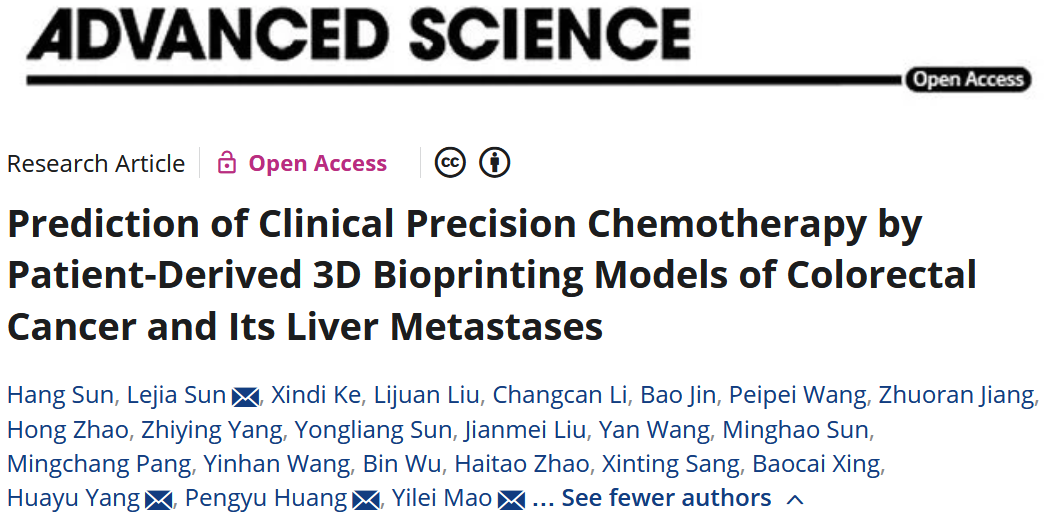
CRC is the third most common malignant tumor worldwide and the second leading cause of cancer-related deaths. CRLM is the most common form of metastasis in CRC and is a major cause of patient mortality. Currently the main treatment approaches are surgical resection and systemic chemotherapy. However, due to the high level of heterogeneity of CRC and CRLM, a considerable number of CRC patients do not benefit from chemotherapy.
The research team initially enrolled 40 CRC patients and 31 CRLM patients. 3DP models were successfully established for 37 CRC patients and 29 CRLM patients, accounting for 93% of the patients enrolled. 3DP models mimic the complex tumor microenvironment through cell-cell and cell-bioink interactions and the entire workflow of bioprinting takes only about two hours.
The research team conducted histological staining and whole-exome genomic analysis on the models and corresponding parental tumor tissues, demonstrating that the models, to a large degree, retained the histopathological and genetic mutation spectrum characteristics of the parental tumors.
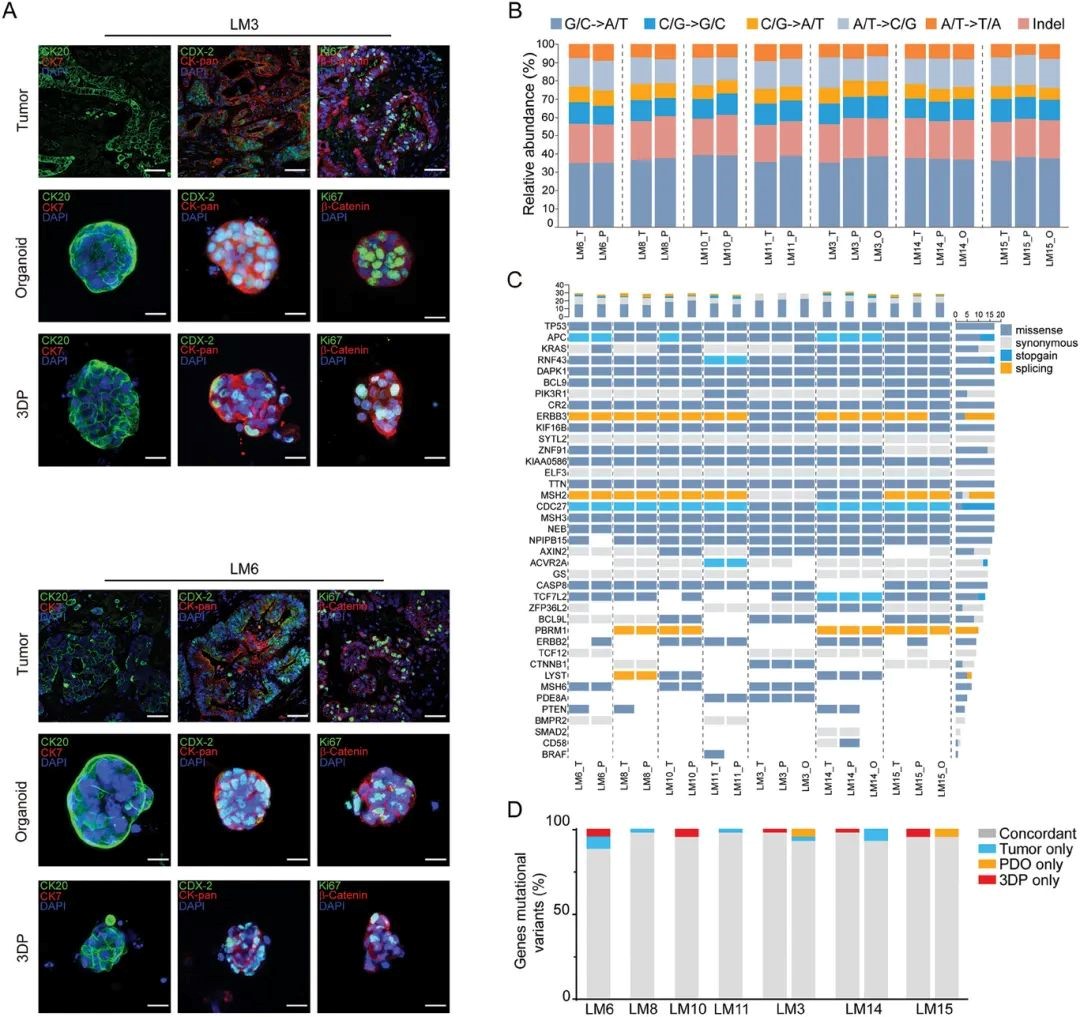
▲The 3DP models for CRLM, to a large degree, retained the histopathological and genomic characteristics of the corresponding parental tumor tissues
The research team further assessed sensitivity of the 3DP models for 37 CRC patients and 24 CRLM patients to three clinical chemotherapeutic drugs (5-fluorouracil, irinotecan, and oxaliplatin). They found a high degree of heterogeneity in the chemotherapy response among tumor models of different individuals, which is consistent with the poor chemotherapy responses currently observed in clinical settings.
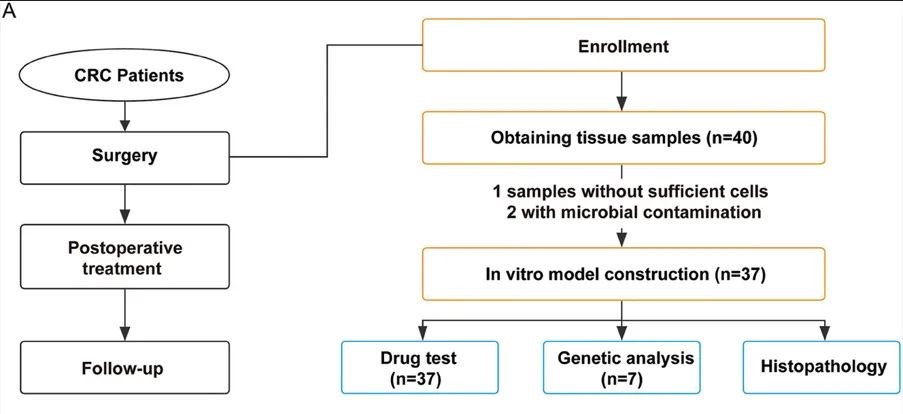
▲The study process using 3DP models for CRC patients
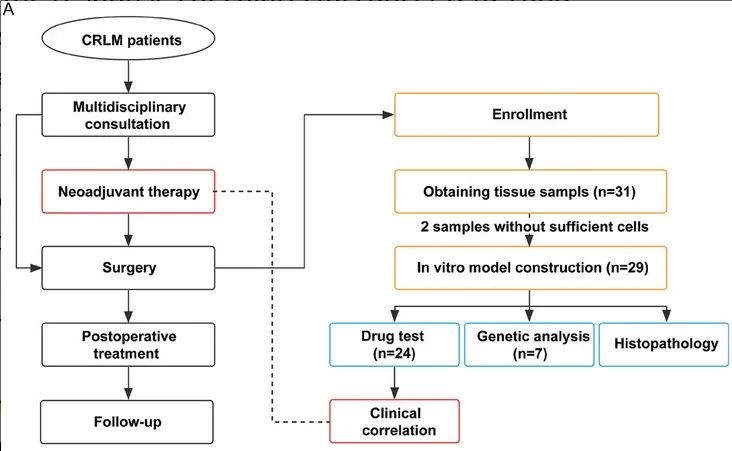
▲The study process using 3DP models for CRLM patients
The research team analyzed the actual clinical responses of 20 CRLM patients who received preoperative neoadjuvant chemotherapy and compared them with the results of drug sensitivity tests conducted on the 3DP models. They found a high level of correlation between the two and that the 3DP CRLM models can accurately predict the clinical response of patients in terms of disease control (relative sensitivity) and disease progression (relative resistance). This indicates that 3DP models hold the potential to predict patients’ responses to drugs and thus aid in precision and personalized treatment and accelerate the clinical development of new drugs. Next, the research team plans to test the predictive effectiveness of the 3DP models among a larger patient population.
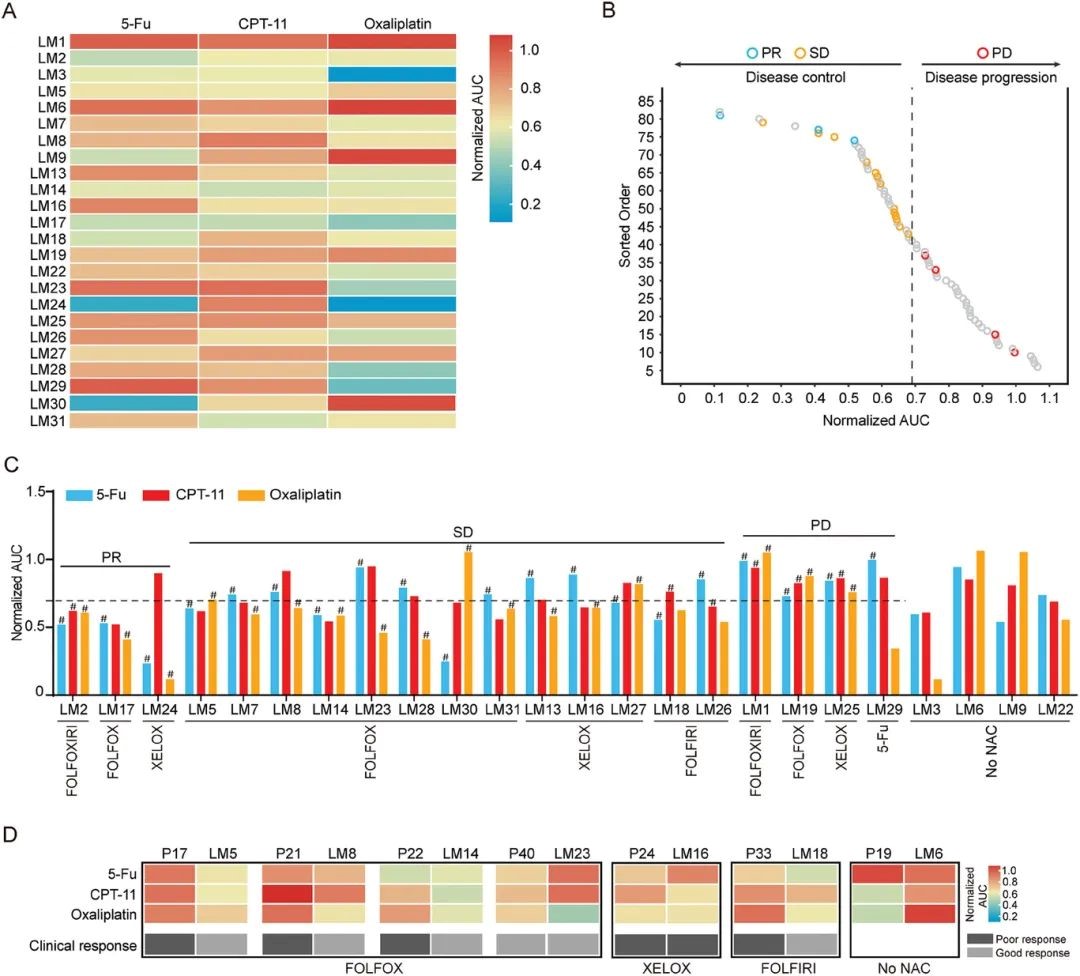
▲Correlation of CRLM 3DP models drug responses with clinical responses of neoadjuvant therapy
Link to the article: https://onlinelibrary.wiley.com/doi/10.1002/advs.202304460
Written by Gan Dingzhu and Sun Hang
Edited by Gan Dingzhu and Chen Xiao
Translated by Liu Haiyan
Reviewed by Xu Haifeng and Wang Yao
